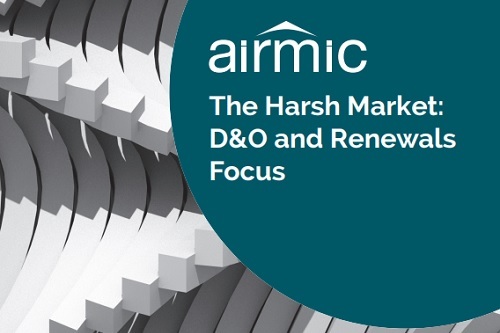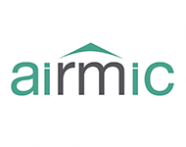Airmic D&O and renewals study reveals dissatisfaction in 2020’s insurance market

Airmic D&O and renewals study reveals buyers’ dissatisfaction in 2020’s harsh insurance market
A Pulse Survey of insurance market conditions focused on Renewals and D&O business and found dissatisfaction that goes beyond hard market prices
- One fifth of respondents saw D&O rate rises of more than 400%
- Two thirds have suffered poor and late communication from insurance partners
- Half already use captives, and another 20% are considering setting one up
Airmic, the leading members’ organisation for risk and insurance professionals, commissioned a survey this summer into the “Harsh market” for insurance – a near perfect storm of conditions that have created a challenging environment for commercial insurance buyers and risk managers.
Four headline findings from the report included: a need for stronger communication and improved use of existing data; dissatisfaction at sudden, extreme and unexplained changes to rates and terms; resultant increased interest among buyers for captives and alternative risk transfer solutions; and a desire for change in the renewals process in future.
Questions focused on recent and upcoming insurance renewals and specifically on directors’ and officers’ liability (D&O), scene to some of the most dramatic changes in rates since insurance prices began to turn. The pulse survey ran over two weeks between 7-20 August and canvassed some 60 respondents from among Airmic’s membership community of UK risk managers and insurance buyers.
Poor and late communication from insurance partners figured highly. Some 66.7% made this complaint in the most recent survey, a rise from 42.6% last year. A running theme, this is perhaps among the most disappointing finding for insurance partners that pride themselves on relationships.
Rate rises were unsurprising, but the scale of price increases is nonetheless dramatic. Broken down by class of business, D&O saw the most exponential rise in pricing. A fifth of respondents said they had experienced a rate increase of more than 400%.
A majority experienced D&O rises of at least 50%, and almost 30% said prices had doubled. The situation follows similar but less pronounced price rises observed in 2019’s study, highlighting the scale of the rate hikes.
The traditional measures of a hard market are present and being felt across the board: higher rates, more exclusions and tighter terms and conditions. Asked to tick all that applied, 95.0% of respondents observed higher rates and 85.0% witnessed reduced capacity from their insurers.
Asked how their approach to renewals will change amid the hardening market in the second half of this year, the results suggest organisations are more open-minded than a year ago. Some 73.3% said they would seek to begin the renewals process earlier and 70.0% wanted to provide more data and information to insurance partners.
Some 66.7% said that in response to 2020’s harsh market conditions they would explore use of alternative risk transfer – captives, parametric triggers, capital markets – as opposed to traditional insurance.
Exactly half said their organisation already operates one or more captives. Asked, if their organisation doesn’t have a captive already, whether they would consider setting forming a captive, 20.3% of the overall group said they were thinking it over.
CLICK HERE to read the full report.
John Ludlow, CEO of Airmic, commented:
“Hard won trusted relationships are clearly under strain. We must work better together to share relevant data with insurers to gain recognition for good risk management. Exposures and vulnerabilities poorly managed will be priced harshly but brokers and insurers should seek out well managed risks and price them beneficially to be respected as balanced and fair.”
About Airmic
Airmic is a members’ association supporting those responsible for risk management and insurance within their own companies. We have nearly 1200 individual members who represent over 450 companies.

